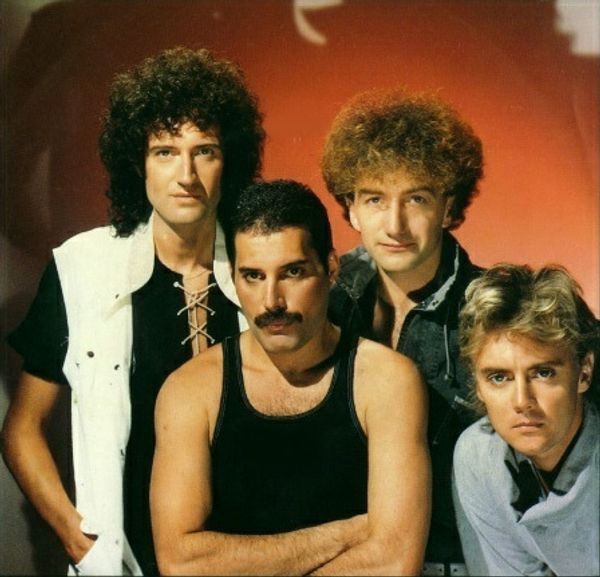DISCLAIMER: The following was originally submitted as an English essay for an academic institution. The writer of this article is the same writer of the essay originally submitted, therefore it was not plagiarized. Please don't hurt my grade. I have academic integrity, I swear.
ON WITH THE SHOW...
Often in today's evolving and growing society, it can be easy to feel isolated despite the multiple ways in which people can connect with one another, especially among youth.
The 2017 Tony Award-winning musical Dear Evan Hansen (featuring a score by Benj Pasek and Justin Paul, and a book by Steven Levenson) tackles this momentous issue facing young people today. The title character, Evan Hansen, struggles with various mental illnesses throughout the course of the show. Early in the musical, Evan sings a song titled "Waving Through a Window" that accurately and realistically describes the emotions felt by those dealing with mental illnesses, such asanxiety and depression.
Dear Evan Hansen, and specifically "Waving Through a Window," has garnered praise for its ability to connect to its audience's night after night. The critical success of Dear Evan Hansen is largely due to the writer's use of ethos and pathos; every moment of the show is geared to ensure that its message of "you are not alone" reaches its intended audience: teenagers and young adults. The pop-rock score easily appeals to the younger generations that the show is intended for. Evan's introductory scene, including the aforementioned song, is a prime example of ethos and pathos being utilized by Pasek, Paul, and Levenson. Their collective use of relatable emotions and various metaphors successfully touches their audience on a humanistic level.
The emotionally charged storyline of Dear Evan Hansen found its inspiration from a traumatizing event that occurred during composer Benj Pasek's high school years. A fellow classmate committed suicide, leading to a community-wide effort to start a conversation about mental illness. Out of Pasek's life experience came the character of Evan Hansen, a socially anxious and depressed teenager who finds himself reeling with the emotional aftermath of a classmate's unexpected suicide. Pasek's role in his community's efforts gave him the authority to compose this piece— the producers used this compelling story as promotional material in order to intrigue audiences and encourage them to see the show.
One of the audience's first glimpses of Evan is during a scene set in a school hallway. He has just been pushed aside by the school bully and left alone. A spotlight shines on Evan as he begins to sing the opening lyrics of "Waving Through a Window." At that moment, the audience shares every breath with Evan. They feel his emotion and are immediately hooked. They want Evan to succeed and get what he deserves.
The lyrics that Pasek and Paul craft allow the audience to sympathize with Evan. Their words "I try to speak but nobody can hear / So I wait around for an answer to appear / While I'm watching people pass / I'm waving through a window / Can anybody see / Is anybody waving back at me" resonate with the audience (Pasek and Paul). Anyone hearing these words can relate to the feeling of loneliness—it is a universal feeling shared by those struggling to deal with depression.
Immediately following the first chorus of the song, the music pauses for a short scene between Evan and his crush, Zoe. Evan's awkwardness and affection for Zoe once again connects to the audience. Their interaction, perfectly crafted by Levenson, shows Evan stumbling over his words as he attempts to flirt with Zoe. The conversation is ended prematurely, largely due to Evan's inability to articulate his feelings for Zoe. The music returns after Zoe's exit, launching Evan into the words "We start with stars in our eyes / We start believing that we belong / But every sun doesn't rise / And no one tells you where we went wrong" (Pasek and Paul).
Evan laments about innocence and how it is quickly lost in our society today. The theme of loneliness returns with the lyric suggesting that no one is there to guide your hand. Through their use of pathos, Pasek, Paul, and Levenson grab the attention of their audience right away, securing it for the entirety of the show. By achieving this, the audience is better able to sympathize with Evan and connect with him on his journey.
Often the best way to connect with an audience is through the use of metaphors. Several key universal metaphors are utilized by the writers of Dear Evan Hansen to ensure that their targeted audience receives their message. The very first lyrics of "Waving Through a Window" are "I've learned to slam on the brake / Before I even turn the key." These lyrics reach success in immediately capturing the audience (Pasek and Paul). Pasek and Paul's use of a metaphor allows the audience to reach inside Evan's head and know his emotions. The intended audience of Dear Evan Hansen is, after all, teenagers and young adults. One of the many rites of passage for young adults is learning how to drive. The notion of driving hangs on almost every young person's mind. Because of the common ground shared between writer and audience, the audience is better able to connect to what Evan is communicating to them.
A reoccurring metaphor that Pasek and Paul use throughout the song comes in the form of Evan's words "Step out / Step out of the sun / If you keep getting burned / Step out / Step out of the sun / Because you've learned" (Pasek and Paul). Audiences can relate to the process of being sunburnt. Once a person has been burnt, they know the precautions they can take to avoid it. Pasek and Paul relate this to Evan's tendency to stray from social interactions. He has been metaphorically burned one too many times, causing him to avoid interacting with others at all costs. As a result, audiences can relate to this logical metaphor and Evan as well.
The bridge of the song features an extended metaphor that acts as the climax of the song. Evan ponders aloud "When you're falling in a forest / And there's nobody around / Do you ever really crash / Or even make a sound" (Pasek and Paul). The writers utilize the famous metaphor of a tree falling in a forest and questioning if it does make a sound, but in place of the tree, Pasek and Paul insert Evan into the equation. Pasek and Paul repeat this stanza multiple times in order to drive home what Evan is feeling and show its importance to their audience.
Mental illness has become a constant reality faced by teenagers and young adults in today's society, and despite increased technology that can connect people even the farthest of distances apart, loneliness can still occur. Pasek, Paul, and Levenson beautifully tackle this issue in Dear Evan Hansen, using the character of Evan Hansen to illustrate the issues faced by society's young people. The writers use the theatrical experience as a medium to advocate for awareness surrounding mental illness is a definite success.
Theatre has historically been used to reach people and help them to heal by giving them a sense of community. Shows, throughout history, have had the rare ability to coerce their audience away from the world outside for just a few short hours. Dear Evan Hansen, through its use of ethos and pathos, definitely achieves a sense of community between stage and audience, helping the audience to know that they are "not alone" in their respective journeys, whatever they may be.
Unlike with Evan, someone is always there waving back.



















